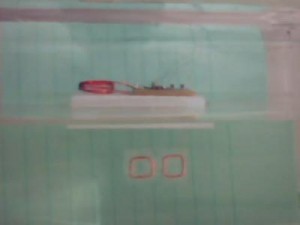Microrobots to embark on 'Fantastic Voyage' through the body

Gastrointestinal cancers are the most deadly of all cancers, responsible for 1,500,000 deaths per year globally.
Diagnosis and treatment typically involves the use of endoscopes, small cameras or optical fibers attached to flexible tubing designed to explore the inside of the body. While effective, they can be dangerously invasive and require sedative medications and recovery time.
A Tel Aviv University (TAU) researcher is developing a better alternative using a swallowable micro-robotic capsule controlled by magnetic resonance imaging (MRI) to investigate the digestive system independent of any attachments.
Similar capsules in use today move randomly through the digestive tract and snap pictures every half second to give doctors an overall view of the intestine. The new wireless "capsule endoscope," however, will use the magnetic field of an MRI machine and electronic signals manipulated by a doctor to forge a more precise and deliberate path.
While the device hasn't been tested in humans yet, the researchers have shown that the driving mechanism works in a water tank.
TAU claims that the capsule is a less invasive and more accurate way for doctors to get an important look at the digestive tract, where difficult-to-diagnose tumors or wounds may be hidden, or allow for treatments such as biopsies or local drug delivery.
A doctor can both propel and guide the capsule using a 3T MRI machine. The capsule moves with the magnetic field "like a sailboat sailing with the wind," said Dr. Gabor Kosa of TAU's School of Mechanical Engineering.
The capsule "swims" with the magnetic current thanks to its vibrating "tail," which is made from a combination of copper coils and a flexible polymer. The use of copper avoids other diagnostic challenges posed by MRI, Dr. Kosa adds. While most magnets interfere with MRI by obscuring the picture, copper appears as only a minor blot on otherwise clear film.
The ability to drive the robot capsule, Dr. Kosa says, will lead to better diagnosis capabilities and spare patients from invasive and time-consuming procedures.
The next step for the researchers is to further develop the capsule's endoscopic and signalling functions and ultimately help push the field of micro-robotics for biomedical applications forward.
The technology was recently reported in Biomedical Microdevices.
Related:
Bacterial nanowire discovery could revolutionize bioelectronic Dreamforce: UCSF converting science into public benefit Nanorobot for Brain Aneurysm
